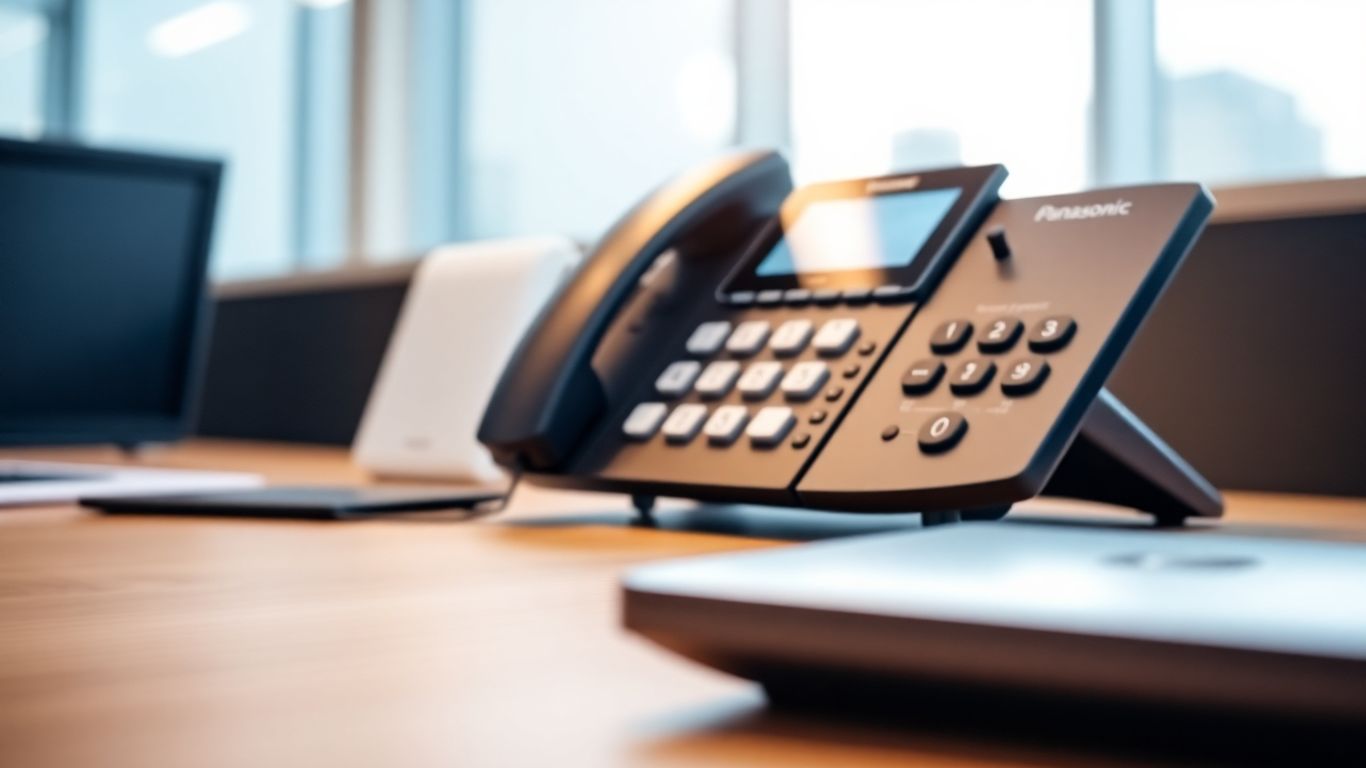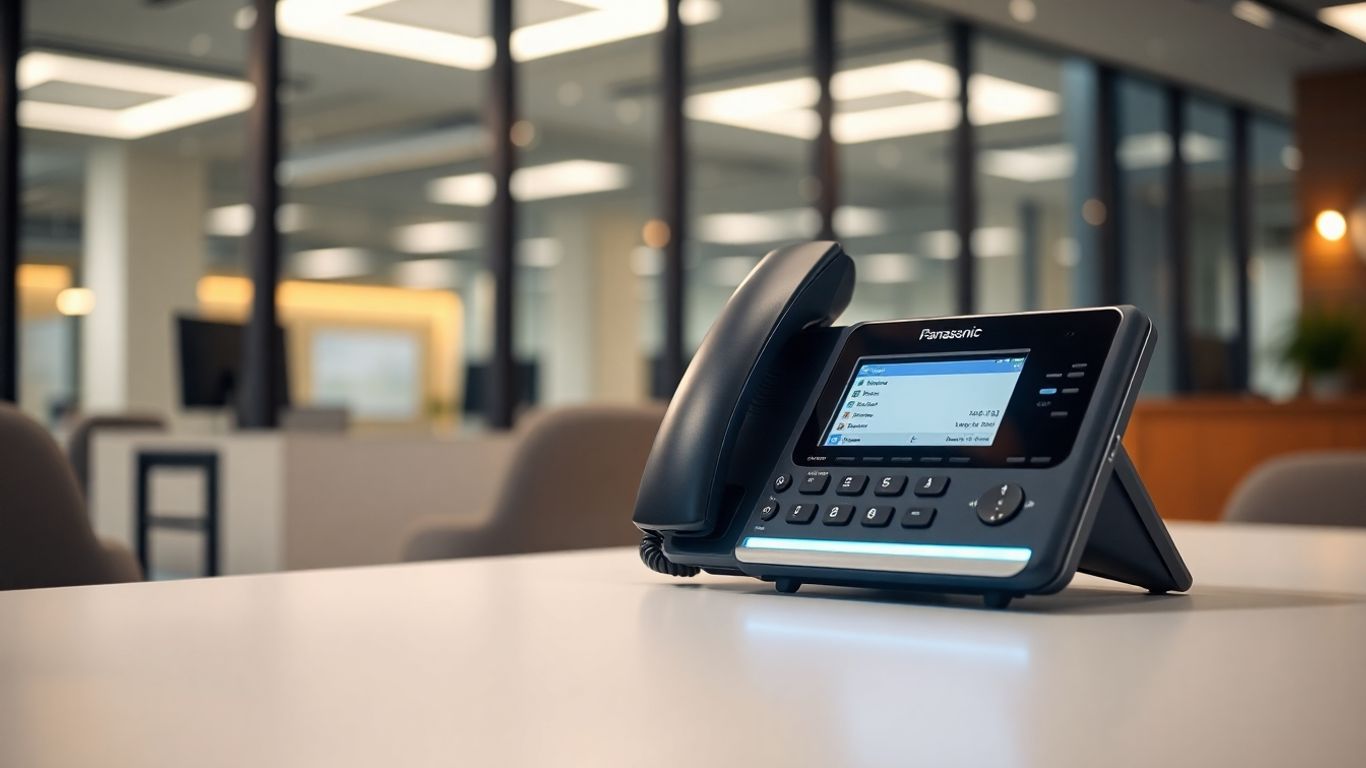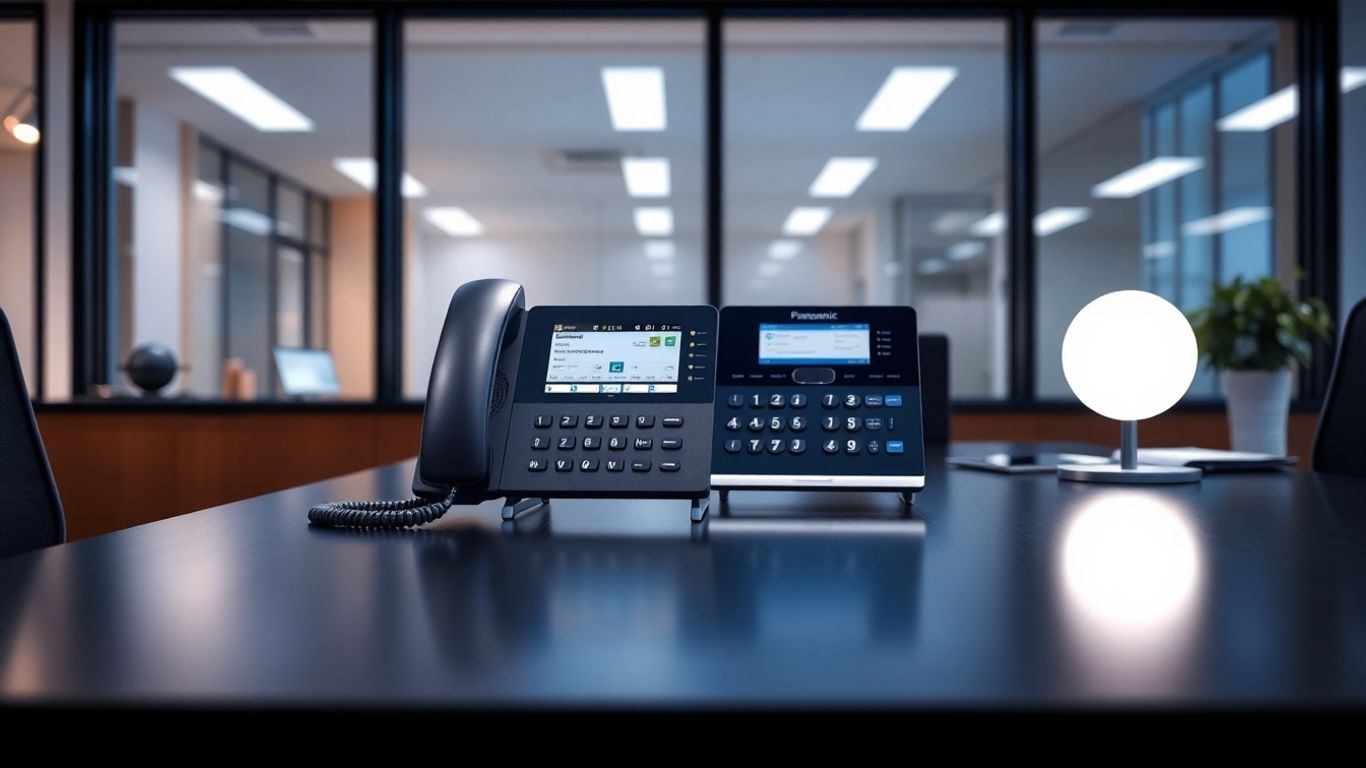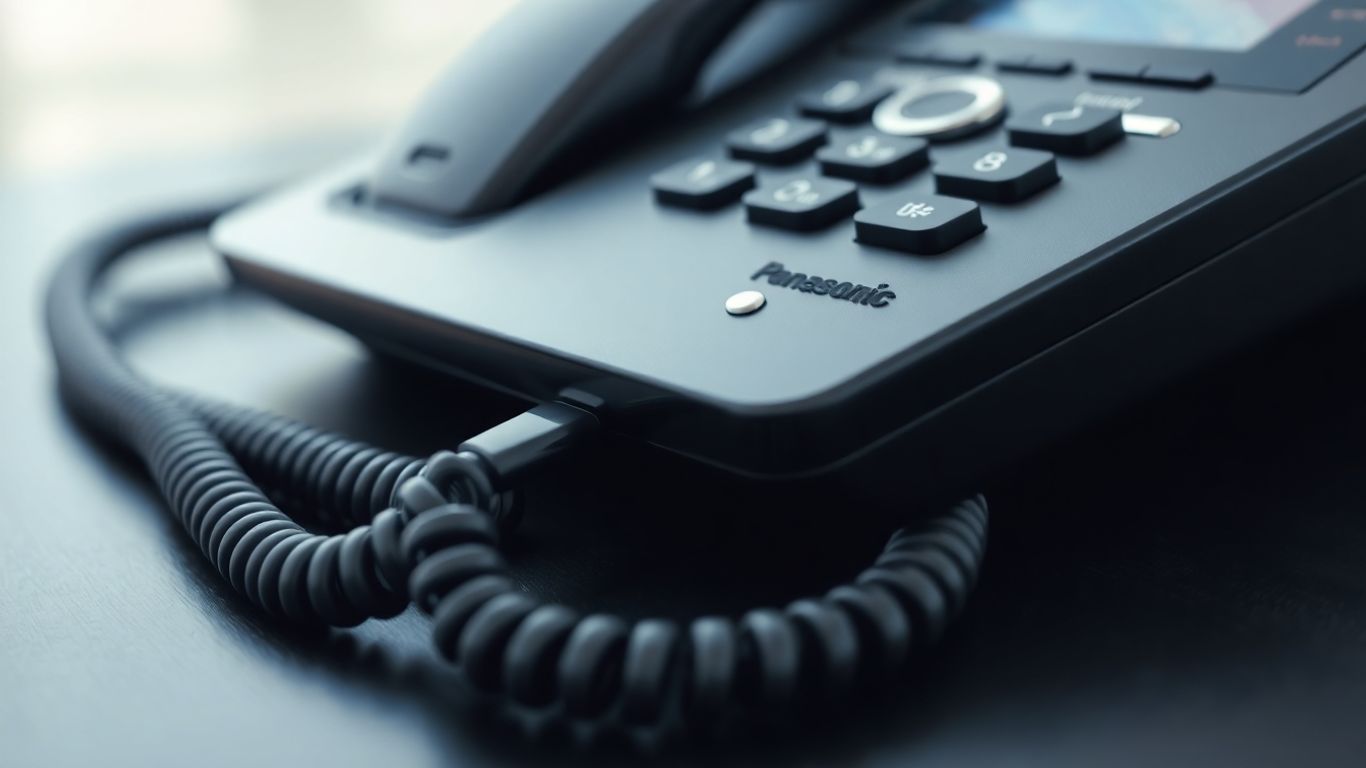So, you've got a Panasonic auto attendant phone system. That's pretty neat. These systems can handle calls for you, sort of like a virtual receptionist. But are you really getting the most out of it? Many businesses just set it up and forget it, which is a shame because there's a lot more you can do. We're going to look at how to make your Panasonic auto attendant phone system work better for you, making things smoother for your customers and your team.

Getting a handle on your Panasonic auto attendant is the first step to making your phone system work for you, not against you. Think of it like learning to drive a car – you wouldn't just jump on the highway without knowing how the gas pedal or brakes work, right? Your phone system is similar. It's got a lot of potential, but you need to know the basics to get anywhere useful.
At its heart, an auto attendant is designed to be your digital receptionist. It greets callers and then directs them to the right place. Most systems offer a few key things:
Okay, so how do you actually do all this? Panasonic systems, like the KX-TD series, often use a programming interface. This might be through a dedicated phone console or, more commonly these days, through software on a computer. It's not always the most intuitive thing at first glance. You'll likely be looking at menus with terms like "System Programming," "Auto Attendant Setup," or "Call Routing." Don't be surprised if it looks a bit technical; that's normal. The key is to find the section that lets you record greetings and then map the button presses (like '1', '2', '3') to specific destinations.
Why bother with all this? Well, a well-configured auto attendant does more than just answer the phone. It makes your business look good, saves your staff time, and helps you catch every opportunity.
Setting up your Panasonic auto attendant might seem like a chore, but it's really about building a better communication experience for your customers and a more organized workflow for your team. Take it step-by-step, and you'll get there.
Getting calls to the right person or department quickly is super important for any business. It's not just about answering the phone; it's about making sure the caller has a good experience from the moment they dial in. Panasonic's auto attendant system gives you a lot of control over how calls are handled, and getting this right can really make a difference.
This is where you set up how calls get spread out. Instead of just ringing one phone, you can send calls to different people or groups based on certain rules. Think of it like a smart traffic cop for your phone calls.
Here are some common ways to distribute calls:
Your greeting is the first impression a caller gets. Making it clear, professional, and informative is key. You can record your own messages, which is way better than a generic beep.
Think about what you want callers to hear:
It's a good idea to keep greetings relatively short and to the point. People want to get to their destination quickly. You can also set up different greetings for different times of the day or for special events.
This feature is really handy because it lets you change how calls are routed depending on the time of day, day of the week, or even specific holidays. It means your phone system can work smarter without you having to manually change settings all the time.
For example:
Setting this up correctly means callers always get the right experience, whether they call at noon on a Tuesday or 10 PM on a Saturday. It helps manage expectations and ensures important calls aren't missed just because the office is closed.
Getting call flow and routing right isn't just about technology; it's about understanding how your customers interact with your business and designing a system that makes that interaction as smooth and efficient as possible. A well-configured auto attendant can significantly reduce caller frustration and improve overall customer satisfaction.
Voicemail is a classic feature, but Panasonic takes it up a notch. Instead of just listening to messages, your system can now convert them into text. This means you can quickly scan your messages, decide what's urgent, and respond faster. It's like having a personal assistant who types up all your voicemails for you. This AI transcription is pretty accurate, too, so you won't be spending ages trying to decipher a mumbled message. You get notifications when a new message comes in, and it's all organized neatly, ready for you to read or listen to.
Remember the old days when you'd get that dreaded "all lines are busy" message? Yeah, that's pretty much a thing of the past with Panasonic's advanced auto attendant. This system can handle a massive number of calls all at once. Seriously, you can give your phone number out to everyone you know, put it on billboards, sky-write it – your system won't flinch. It's designed to keep up, no matter how busy things get. This means no more missed opportunities because your phone lines were full. It's like giving your business a superpower for handling customer contact.
This is where things get really interesting for streamlining your day-to-day operations. Your Panasonic auto attendant can connect directly with your existing scheduling software. Imagine this: a caller needs to book an appointment. Instead of just taking a message or transferring them to a busy receptionist, the auto attendant can actually interact with your calendar. It can find available slots, book the appointment, and confirm it with the caller, all automatically. This saves a ton of time for both your customers and your staff, cutting down on back-and-forth emails or phone calls trying to find a time that works for everyone.

Ever been on the phone with a company and felt like you were talking to a robot that needed a moment to process? It's frustrating, right? Our Panasonic auto attendant uses AI that's incredibly fast. We're talking response times measured in milliseconds. This means it can keep up with a natural conversation without those awkward pauses. It's like talking to someone who's always ready with an answer, making the whole interaction feel smooth and human-like. This speed isn't just a cool feature; it makes a real difference in how people feel about your business. They don't get annoyed waiting, and they feel heard.
This system goes beyond just understanding "Press 1 for sales." It can actually grasp what people are saying, even if they ask complicated questions or don't use the exact keywords. Think about it: someone might call and say, "I need to know if you still have that blue widget in stock, and if I can pick it up today." Instead of getting stuck, the AI can figure out they're asking about product availability and pickup times. It can then pull up the right information and give a helpful answer, all without needing a human to step in. This makes it way easier for customers to get the info they need, fast.
AI can do more than just answer questions; it can make each call feel a bit more personal. By remembering past interactions or understanding the context of a call, the system can tailor its responses. For example, if a customer calls back about an issue they discussed yesterday, the AI might acknowledge that. It can also adjust its tone or the information it provides based on who is calling or what they're asking about. This level of personalization makes customers feel valued and understood, which is a big win for any business.
The goal here is to make the automated system feel less like a machine and more like a helpful assistant. By focusing on speed, understanding, and personalization, we're making sure that every call is a positive experience for your customers, even when no human is directly involved.

Connecting your Panasonic auto attendant to other business tools can really make things run smoother. It's not just about answering calls; it's about making sure the right information gets to the right place, automatically. Think of it as building bridges between your phone system and the apps you use every day.
Zapier is a big player here. It lets your Panasonic system talk to thousands of other applications. This means when a call comes in, or a message is left, it can trigger actions in other apps. For example, a new lead from a call could automatically create a contact in your CRM. It’s like having a digital assistant that connects all your software.
This isn't just a one-way street. With two-way data flow, information can move back and forth. So, not only can your phone system send data to another app, but that app can also send information back. Imagine your auto attendant getting updated with customer information from your CRM before it even answers a call. This keeps everything current and reduces manual data entry, which, let's be honest, nobody enjoys.
Keeping data in sync across different platforms is a headache many businesses deal with. Integrations with your Panasonic system aim to fix that. When something happens on your phone system, like a call being logged or a voicemail being left, that information can update your other systems instantly. This means your sales team, support staff, or anyone else who needs that data has the most up-to-date information available, right when they need it. No more waiting for reports or manual updates. It’s about making sure your business operates with the latest information at all times.

Keeping your Panasonic auto attendant running smoothly means paying attention to how it's used. It's not just about setting it up and forgetting it; you've got to keep an eye on things to make sure it's working for you, not against you. Think of it like managing your company's electricity bill – you wouldn't leave lights on all day in an empty office, right? Same idea here.
This is a pretty straightforward way to keep costs in check. You can set a cap on how many minutes your AI receptionist is active. This is super handy if you're on a tight budget or if you want to make sure the AI is only working during specific, high-demand periods. You can adjust these limits too, so if your business needs change, your system can change with it. It helps you avoid unexpected charges and makes billing more predictable. It's a good idea to look at your usage patterns and set limits that make sense for your business hours or busy seasons. For example, you might set a higher limit during weekdays and a lower one for weekends.
Knowing how your system is being used is key. You can check in on usage stats to see when your auto attendant is busiest. This information can help you figure out staffing needs or identify times when you might need to adjust your call routing. Setting up alerts is also smart. You can get a heads-up when you're getting close to your minute limit or if there's unusual activity. This way, you can jump in and make adjustments before any problems pop up. It's like having a little warning system for your phone system.
Your auto attendant doesn't need to be on 24/7 if your business isn't. You can program specific times when the system is active. This means it won't answer calls when your office is closed, which is a nice way to manage customer expectations. Plus, you can set it to recognize holidays. So, instead of a standard greeting, it can play a special message on Christmas or Thanksgiving. This makes the system feel more in tune with your business's actual schedule and shows customers you're paying attention. It's all about making sure the right message gets delivered at the right time, which is pretty important for customer service. You can even integrate this with scheduling tools to make sure appointments are handled correctly based on availability.
Managing system resources isn't just about cutting costs; it's about smart allocation. By controlling when and how your auto attendant operates, you ensure it's a tool that supports your business goals, rather than an expense that drains them. It's about making your phone system work for you, efficiently and effectively, every single day.
If you're still treating your call data like it's ancient history, you're missing out. Our shareable call links are a small feature that can make a big difference in how your business operates. Think of it as a way to get a clearer picture of who's calling and why, without all the usual hassle. It's a simple addition that can really transform your tracking efforts.
Ever had an automated system butcher a customer's name or a product name? It's not a great look. That's where pronunciation guides come in. You can actually input how specific words or names should be pronounced. This means your Panasonic auto attendant will sound more natural and professional, especially when dealing with less common names or industry terms. It's a small detail, but it really helps build trust and makes the caller feel heard.
One of the best things about a good phone system is that it can grow with you. Your Panasonic auto attendant is designed to handle more calls and more complex routing as your business expands. You don't have to worry about hitting a wall when you get busier. Whether you're adding new staff, expanding your services, or just seeing more customer interest, the system can adapt. This means you can focus on running your business, not on whether your phone system can keep up. It's about having a reliable partner that supports your growth, not hinders it. The real estate industry, for example, is constantly evolving, and having flexible communication tools is key to staying ahead [cfac].
This system is built to scale. As your business grows, your phone system should too. It's about having the flexibility to add more lines, more features, and more complex call flows without needing a complete overhaul. This adaptability is what separates a good system from a great one.
Keeping your Panasonic auto attendant running smoothly and securely is pretty important. It's not just about making sure calls get through, but also about protecting your business information. Think of it like maintaining your car – regular check-ups prevent bigger problems down the road.
Okay, so sometimes people forget passwords or PINs. It happens. For your Panasonic system, having a clear process for resetting these is key. This usually involves an administrator logging into the system's management portal. From there, they can typically find a user management section where they can reset passwords or PINs for individual extensions. It's a good idea to have a policy on who can request these resets and how they're verified to keep things secure. Don't share your admin login details with just anyone.
These two can be a bit technical, but they're worth knowing about, especially if you run into weird call quality issues. SIP ALG (Application Layer Gateway) is a feature in some routers that tries to help VoIP traffic. Sometimes, though, it can actually mess things up. Double NAT (Network Address Translation) happens when you have two routers on your network each doing NAT. This can also cause problems for VoIP. If you're experiencing dropped calls or one-way audio, checking your router settings for SIP ALG and Double NAT is a good troubleshooting step. Often, disabling SIP ALG or reconfiguring your network to avoid Double NAT can fix these issues.
Just like your smartphone gets updates to fix bugs and add new features, your Panasonic phone system needs them too. Firmware is the software that runs on your phone hardware and the main system. Keeping it updated is really important for security and performance. Updates can patch security holes that hackers might try to exploit, and they often include improvements that make the system run better or add new capabilities. Your IT person or provider can usually manage these updates, but it's good to know they're happening. It's a simple step that makes a big difference in keeping your system reliable and safe.
Keeping your system safe and running smoothly is super important. Think of it like taking care of your bike – regular check-ups mean fewer problems down the road. We can help you make sure everything is secure and working its best. Want to learn more about how to keep your system in top shape? Visit our website today!
So, there you have it. We've gone through how to get the most out of your Panasonic auto attendant. It's not just about answering calls; it's about making sure every call counts, whether it's after hours, during a busy period, or when you're just not around. Features like setting limits on AI receptionist time, controlling active hours, and using AI for voicemails can really make a difference in how smoothly things run. Plus, with integrations like Zapier, your phone system can actually talk to your other business tools, saving you time and hassle. Don't let your phone system be an afterthought; put it to work for you.
Think of an auto attendant as your virtual receptionist. When someone calls your business, it answers the phone and gives callers options, like pressing '1' for sales or '2' for support. This helps direct calls to the right person quickly, making sure no one gets lost or frustrated. It makes your business look more professional and organized, even when you're busy.
Absolutely! You can record your own welcome messages and set up the menu options exactly how you want them. This means you can use your own voice, add special announcements, or change the options based on the time of day or special events. It's all about making the caller's experience smooth and informative.
No problem! The auto attendant can be set up to handle busy lines. It can send callers to voicemail, forward them to another extension, or even offer to call them back. This way, you don't lose potential customers just because your team is swamped.
It saves time by automatically sorting calls, so your staff doesn't have to answer every single one and figure out where it needs to go. This frees them up to focus on important tasks. It saves money by reducing the need for a full-time human receptionist and by making sure fewer calls are missed, which can lead to more sales.
Yes, it can! You can set up different greetings and options for when your office is closed. For example, it can play a message saying you're closed and then direct callers to your voicemail or provide emergency contact information. This ensures callers always get some kind of response, day or night.
Panasonic systems are designed to be user-friendly. While there's a bit of a learning curve, most settings can be managed through a simple interface. Many features, like changing greetings or adjusting call routing, can be done without needing a technician. Plus, there are guides and support available to help you along the way.
Intelligent call distribution means the system can send calls to specific people or groups based on certain rules, like who is available or who has the most expertise. Time-based routing is when the system automatically changes how it directs calls depending on the time of day, day of the week, or even holidays. For instance, calls might go to the sales team during work hours but to voicemail after 5 PM.
Definitely! By making sure callers reach the right department quickly, it improves their experience. You can also use it to provide important information, like store hours or directions, without a person having to answer every time. Some advanced systems can even use AI to understand what callers need and provide answers or solutions automatically.
Start your free trial for My AI Front Desk today, it takes minutes to setup!








